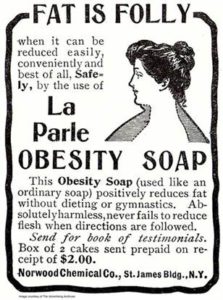Category — Food and Nutrition
An apple a day
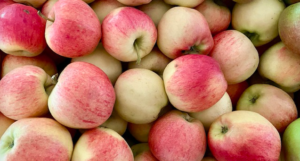
I refuse…
to write about politics today, the mockery of last night, how deeply ashamed I am to be a citizen of a country that calls that man our President;
to write about this virus and our lack of a national response and the disaster of reopening schools and the politicalization of everything from masks to vaccines;
to write about our deep wounds as a nation and as a people and how they are festering.
Instead, today I write about APPLES. Yes, apples. Because they are fresh and crisp and healthy, and they grow abundantly in our state, and they make me very happy. Standing in our little orchard eating them right off the tree, oh yeah. A cauldron of applesauce simmering on the stove that makes the house smell like heaven, uh huh. Big box of apples delivered to the Food for Lane County Dining Room. A bushel of apples to Wildcraft in exchange for juice and cider. Liza’s apple pie.
Herewith…more than you want to know (but interesting!) about the original epicenter of apple-growing in our state: Hood River.
But first, fun fact: The oldest apple tree in the Pacific Northwest is located six miles from downtown Portland in the middle of a highway interchange. This tree was planted circa 1826.
The nation’s grocers discovered Hood River apples—huge, crisp and able to maintain their perfection through the winter—at countless agricultural exhibitions throughout the country in the late 1800s, especially the World’s Fair in Chicago, where Hood River apples took the grand prize, the gold medal and twenty-seven other medals. At the Columbia Exposition in 1892, Hood River Valley received sixteen awards, more than any other region, including a prize for the largest apple, a six-and-a-quarter-inch high, thirty-three ounce Spitzenberg as big around as a cantaloupe.
In 1900, responding to interest generated by the awards and contracts made through the expositions, Hood River growers freighted their first shipment of apples to New York. Five years later, 90 percent of the valley’s apple output was being shipped east for the “fancy trade.” From 1900 to 1910 the entire crop of valley apples sold while still on the trees.
Today Oregon ranks in the top ten states for apple-growing (Washington is first).
In our little orchard we grow Galas, Fujis, Braeburns and Red Delicious. Fyi, Galas and Fujis are the two most popular varieties in the state. Other common apple varieties grown in Oregon are Jonagold, Granny Smith, Honeycrisp and Braeburn.
‘Ya see, I took your mind off the hot mess that is the United States 2020 for about two minutes! You’re welcome.
Now go eat an apple.
September 30, 2020 4 Comments
Shopper in a Strange Land
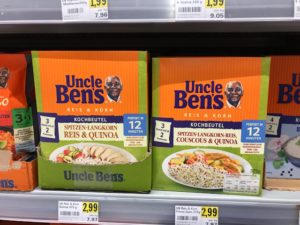
What I enjoy most about spending time in other countries is not, I am embarrassed to admit, visiting museums, touring castles or cathedrals, exploring archeological sites, or checking off items from TripAdvisor’s “must see” list.
What I love most is grocery shopping.
There. I said it.
Call me a Philistine. And I don‘t mean a native or inhabitant of ancient Philistia. (See I’m NOT a Philistine. A Philistine would never know that.) I mean a person disdainful or ignorant of intellectual or artistic values.
I am not disdainful. I do go to museums. Really I do. But what really excites me is walking through a Spar or a Billa. Give me a Carrefour to cruise. An Inka to investigate.
Strolling the aisles, I am surrounded by women. I see domestic life lived in the public sphere. I experience the everyday-ness of the community of which I am a temporary resident. I see how similar we are, we women who shop: the harried professional in her office outfit, the old woman who probably lives alone, the mother juggling stroller and grocery cart.
In countries where the language is completely unfamiliar, I make a game out of trying to guess what the product on the shelf actually is. Sometimes even the picture does not help. Once, in a Prague grocery store, I studied the soup choices for a full five minutes, finally selecting something that looked like it could be chicken soup. Back at the apartment with access to a dictionary, I discovered that I had chosen the Czech favorite (but alas not mine): liver dumpling soup.
I am interested to see (and am often mystified by) the U.S. products that make their way onto foreign shelves. In a Vienna grocery store yesterday, I stood transfixed in front of two long shelves filled with more varieties of Uncle Ben’s converted rice than I knew existed. Fun fact: In the 1910s, a German-British scientist Erich Huzenlaub invented a form of parboiling designed to retain more of the nutrients in rice, make it resistant to weevils and reduce cooking time. Thus goes the backstory to Uncle Ben’s. This, folks, is why god invented Wikipedia.
I love that something as easy as grocery shopping, an activity I have done roughly 12,873 times in my life, can all of a sudden be challenging. Weighing your own produce. Who knew? Looking in vain for cans of soup to discover that soup comes only dried, in packets. Performing mental gymnastics as you calculate the dollar- per-pound cost of the euro-per-gram Emmentaler. Learning (the hard way) that you must very very quickly put all your scanned items back into your grocery cart and walk them over to a bagging area. And self-bag.
Off I go now to see the Stadt der Frauen exhibit at the Belvedere. But the real treat of the day will be my hunt for Griechischer Joghurt at the Eurospar.
March 27, 2019 6 Comments
Happy National Soup Month
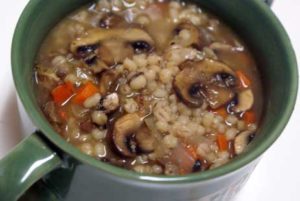
January is National Soup Month.
I know. I know. I just told you last week that January was National Mentor Month. I wasn’t lying. In addition to being National Mentor Month and National Soup Month, January is also National Black Diamond Month, National Blood Donor Month, National Hot Tea Month, National Oatmeal Month, and my personal favorite, National Bath Safety Month (proposed by the manufacturers of rubber bath mats, right?)
Back to soups.
Allow me to soupsplain you:
–The earliest archaeological evidence for the consumption of soup dates back to 6000 BC, and it was hippopotamus soup. (I did not extensively fact-check this one. Seems iffy.)
–The word restaurant (meaning “[something] restoring”) was first used in France in the 16th century, to refer to a highly concentrated, inexpensive soup, sold by street vendors, that was advertised as an antidote to physical exhaustion. In 1765, a Parisian entrepreneur opened a shop specializing in such soups. This prompted the use of the modern word restaurant for the eating establishments. (Thank you, Wikipedia.)
–Americans consume more than 10 billion bowls of soup each year.
–The most popular soup variety in the U.S. is chicken noodle. (Ho Hum.)
–And here, my friends, is a list of “notable” soups through the ages: from Aquadto, a green Peruvian soup (green is from cilantro) reputed to be a hang-over cure to zuppa pavese, an Italian broth into which fried slices of bread and poached eggs are placed.
This pro-soup post is an excuse to share my favorite hearty home-made winter soup: Mushroom Barley. It is very very simple—after you make the homemade stock. It’s the homemade stock that makes the soup. Mine is (chicken) bone broth. Place on the stove a big pot with carcasses from past roast chickens, two carrots, 2 or 3 stalks of celery, a small quartered onion, 3 or 4 peeled whole cloves of garlic, a bay leaf, kosher salt, grindings of pepper, water to cover. Let this simmer (covered) pretty much all day. Then strain, put in the refrigerator overnight, skim the fat in the morning, and voila.
Now comes the easy part. Simmer a cup of uncooked barley in 2-2 ½ cups of that stock. While that’s going on, slice a whole lot of cremini mushrooms (a pound, I’d say) and sauté in garlic-infused combo of olive oil and butter. (That is, sauté the garlic, and I mean a lot, first, then add the mushrooms.) In a big pot, pour 6 cups of the skimmed stock, add the cooked barley, transfer in the sautéed mushrooms. I add sherry. I don’t measure, but if I did, I think it would be 3-4 tablespoons. Try it and taste. More sherry? Probably a bit more salt. (Aren’t you glad I don’t write cookbooks?) (And yes, I know: The image above has carrots, and I didn’t say to add carrots. Don’t. I just couldn’t find a non-carrot photograph to use.)
For those of you reading this who live in Eugene, two words: Metropol baguette. May I also suggest an aged Gouda with that grainy mouth-feel. And a Fuji apple.
Bon Appetit. And Happy National Soup Month.
Now go out and buy that rubber mat!
January 16, 2019 1 Comment
The Power of Place
I am about to head off to my regular Wednesday shift at Food for Lane County’s Dining Room, a restaurant-style (as opposed to soup-kitchen style) facility that feeds up to 300 people a day. The people who come – many but not all are unhoused – sit at tables set with silverware and cloth napkins and are served hot meals by a volunteer wait staff who takes their order (meat or vegetarian? Full plate or—my least favorite request—no vegetables? Food allergies?), brings condiments, serves coffee and dessert. There is almost always live music.
I’ve been volunteering for close to four years now, and during that time I’ve thought a lot about the power of place. But until today I’ve thought only about the power of The Dining Room in the lives of the diners, the momentary oasis provided by this calm, warm, friendly, non-soup-kitchen place and the effect this has on those who sit and eat.
There is the blessed experience of sitting in a warm place on a cold day, sitting in a dry place on a wet day. There is the immeasurably enriching experience of being acknowledged not avoided, being looked at not looked away from. There is being asked what you would like. There is being told yes. There is being served. There is the comfort of a full stomach. There is the experience of being in a place suffused with politeness and respect.
Today I am thinking about the other side of this power of place: The power of The Dining Room in my life. This is a place where I get to work along side good people, not “do-gooders” who are oh-so-proud of themselves for their little volunteer gig, but upbeat, hard-working, good-humored people who care about other people, who care about their community, who transform compassion into action, who are in it for the long haul.
It raises my spirits, however low they may be — and they have been lower this year than ever before – to spend time in this place. It nurtures my belief in my fellow humans. Being surrounded by good people makes me a better person.
December 27, 2017 2 Comments
Put your best fork forward*
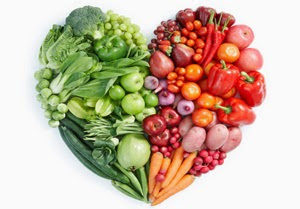 March is National Nutrition Month! (“Put your best fork forward” is the catchy tagline this year.) Let’s all celebrate by 1) eating a wonderfully nutritious, real foods/ whole foods meal 2) enjoying this brief romp through the history of diet fads — which SPOILER ALERT are not about good nutrition.
March is National Nutrition Month! (“Put your best fork forward” is the catchy tagline this year.) Let’s all celebrate by 1) eating a wonderfully nutritious, real foods/ whole foods meal 2) enjoying this brief romp through the history of diet fads — which SPOILER ALERT are not about good nutrition.
1820: Vinegar and Water diet made popular by Lord Byron, who, I must add, died at the age of 36. So maybe not.
1825: Low Carb Diet (that’s right, in 1825). It first appeared in The Physiology of Taste by Jean Brillat-Savarin, a more-than-pleasantly plump French lawyer and politician who pretty much invented the gastronomic essay, aka food writing.
1830: Graham’s Diet, invented by the man who would found the American Vegetarian Society and, more importantly, invent Graham Crackers, without which there would be no s’mores. PS: He believed vegetarianism was a cure for masturbation. What about that, you vegetarians?
1863: Banting’s Low Carb Diet, which was so popular that “banting” became a common term for dieting during this time period.
1903: Fletcherizing. Horace Fletcher’s dietary advice to insure high-level wellness: Chew your food 32 times. No not 33.
1917: The birth of “calorie counting” (damn) with the publication of Lulu Hunt Peters’ book, Diet and Health.
1925: The cigarette diet, as in “Reach for a Lucky instead of a sweet.” Really.
1928: The Inuit Meat-and-Fat Diet calling for consumption of raw fish, caribou and whale blubber. Not wildly popular.
1930: The first of the liquid diet drinks, courtesy of a Dr. Stoll and – 1930 being a big year for fad diets – the Hay Diet which proclaimed that carbs and proteins could not be consumed together. Whaaat? No steak and potatoes?
1934: Bananas and Skim Milk Diet (backed by – here’s a surprise – United Fruit Company)
1950: Another hallmark year: The Grapefruit Diet and the Cabbage Soup Diet. And people say the 1950s were boring.
1964:The Drinking Man’s Diet (like on Mad Men)
1967: Birth (that’s a pun) of the hCG diet, a combination of injections of Human Chorionic Gonadotropin (produced in a pregnant woman’s placenta) and a 500-calorie diet.
1970: The Liquid Protein Diet. One version was marketed as The Last Chance Diet, a name it earned when several people died using the product.
1976: My favorite: The Sleeping Beauty Diet in which the dieter is heavily sedated for several days (and thus doesn’t eat).
1981: Beverly Hills Diet. Unlimited quantities of fruit – and only fruit – for the first ten days.
1985: The Caveman Diet in which one enjoys foods from the Paleolithic Era. Yes, the Paleo craze has been around for this long, longer if you count the whale blubber version.
1987: The Scarsdale Diet – low carb, low-cal. Its originator, Dr. Herman Tarnower, was famously murdered by his mistress, the head of a posh private school.
1988: Calorie Restriction (CR) Diet in which you satisfy all nutritional needs while consuming 30 percent fewer calories than your body requires. Forever. This is very very difficult to do. (Plus you look unpleasantly cadaverous.) The good (and bad) news? This diet works.
1990: Return of the Cabbage Soup Diet. Because it worked so well the first time.
1994: The high-protein, low carb Atkins’ diet.
1996: Eat Right for Your Type, a diet based on your blood type. O. No.
1999: The holy triumvirate: Juicing, Fasting, Detoxing.
2000: Raw Foods.
2006: Maple syrup, lemon juice and cayenne. ‘Nuf said.
2010: Baby Food Diet: 14 jars of baby food a day. Diapers optional.
2012: The ascent of Gluten Free.
2014: The Bulletproof Diet, the secret of which is drinking “bulletproof coffee” (coffee laced liberally — as in 400 cals a cup — with butter or coconut oil).
2016: The Mono Diet is a one-food-and-one-food only plan that continues to resurface, year after year. 2016 was The Year of the Banana.
Not to mention: tape worms, Bile Beans, cotton balls, feeding tubes…What’s next? Don’t answer that.
March 8, 2017 2 Comments
Breakfast of Champions
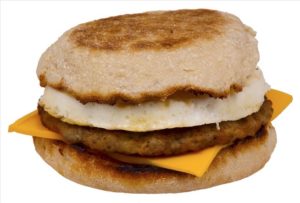 Sitting in the stands in Matt Knight Arena this past weekend watching a women’s basketball game, I was distracted from the action on the court by the overabundance of corporate signage. In additional to the usual local sponsors (from a nearby Indian Casino to a hometown grocery store chain, there was a huge McDonald’s banner. The brand was again touted in a digital display running under the scorers’ table. It read: McDonald’s the Official Breakfast of the Oregon Ducks.
Sitting in the stands in Matt Knight Arena this past weekend watching a women’s basketball game, I was distracted from the action on the court by the overabundance of corporate signage. In additional to the usual local sponsors (from a nearby Indian Casino to a hometown grocery store chain, there was a huge McDonald’s banner. The brand was again touted in a digital display running under the scorers’ table. It read: McDonald’s the Official Breakfast of the Oregon Ducks.
Allow me to rant a moment. It feels so good to rant about something other than, well, you know what. Presidents come and go. But McDonald’s, like The Dude, abides.
The most common breakfast at McDonald’s is the sausage Egg McMuffin which derives more than 30 percent of its calories from fat. The bad kind. One little sandwich, consumed in a few bites in less than a minute contains 25 percent of the saturated fat you should take in for the entire day – if, indeed, you should take in any saturated fat. Cholesterol content? That would be 87 percent of your daily max. Wondering about sodium? Wonder no longer. That little sandwich contains more than 1/3 of your total daily sodium intake. Somehow or another, amid all that fat and salt, McDonald’s recipe geniuses managed to throw in a teaspoon of sugar.
It’s all about what’s called in the junk food/ fast food biz, the “bliss point,” that carefully calibrated magic combination of fat, salt and sugar that activates the pleasure-reward pathways in our brains. It’s the laboratory-orchestrated “flavor profile” that keeps us eating (gobbling, really) without being satiated (for very long).
Every day, one in four Americans eats at a fast food restaurant. As a nation (a Fast Food Nation), we spend more than $200 billion a year on meals like the Official Breakfast of the Oregon Ducks. That’s a chunk of change. Ironically, $200 billion is also the estimated cost of U.S. medical spending directly related to obesity. People love the “flavor profile.” People hit the “bliss point.” And it’s cheap! The food is cheap because the major commodities used to produce it are heavily subsidized by the U.S. government.
Speaking of more money than most of us who are not President of the United State can imagine, fast food restaurants spent $4.6 billion in advertising in 2013 (most recent stat I could find) with McDonald’s easily topping the chart, outspending #2 Subway by 60 percent.
It’s not just that this Official Breakfast is BAD for you. It is also not what today’s health-conscious, high-energy athletes DO eat to stay in top shape. But most of all, the “Official Breakfast” proclamation is not what all those hundreds of kids in the stands should be reading, the kids who idolize the athletes, who want to grow up to be just like them. They won’t grow up to be just like them by breakfasting on McMuffins and McGriddles.
March 1, 2017 4 Comments
How sweet it is(n’t)
 Here’s something you don’t want to hear.
Here’s something you don’t want to hear.
The medical news and dietary recommendations about sugar that we’ve all been reading about for the last five decades have been largely shaped by — wait for it – the sugar industry. An industry trade group called the Sugar Research Foundation (today known as the Sugar Association) apparently paid scientists in the 1960s to downplay the link between sugar and heart disease, and focus instead on saturated fat as the culprit.
What did we hear about sugar? Okay, it caused tooth decay. Big deal. Brush your teeth. The sugar-induced energy rollercoaster could be promoted as “quick energy.” Remember the get-a-life-eat-a-Snickers-bar ad campaign? If a person was concerned about health…FAT was the real enemy. Fat was the killer. Fat was the fast-track to heart disease.
For the gory details on the collusion between sugar execs and leading Harvard scientists, one of whom went on to help draft the national’s dietary and nutritional plan, check out this recent New York Times story
and the JAMA Internal Medicine research upon which it was based.
And, lest you think this collusion between agriculture, business and science was just a remnant from the Bad Old Days, please note that just last year it came to light that Coca-Cola, the world’s largest producer of sugary beverages, had provided millions of dollars in funding to researchers who sought to play down the link between sugary drinks and obesity.
At the risk of merely replacing evil demon fat with evil demon sugar (remember evil demon salt?), allow me to share this information about the health effects of sugar.
Sugar can damage your heart
Excess sugar increases the risk of heart disease (yes, like fat), but there is also strong evidence that sugar affects the heart’s pumping mechanism and may also increase the risk of heart failure.
Sugar and obesity? Yep.
Fat causes fat, we’ve been told. Fat in the diet is the culprit. Eat nonfat. Eat low-fat. But has this explosion of low-fat items in the grocery store halted out obesity epidemic? No. Consider sugar. Excess fructose consumption has been linked to an increase in a condition called leptin resistance. Leptin is a hormone that tells you when you’ve had enough food. If you develop leptin resistance, you don’t get the message that you’re full. You keep eating. And eating.
Sugar specifically promotes belly fat (the worst kind)
Fructose in particular appears to actually cause visceral fat cells to mature. A study of overweight kids who consumed fructose-laden drinks showed fat accumulation in the trunk, setting the stage for a big belly and even bigger future risk for heart disease and diabetes.
Sugar may be linked to cancer production and may effect cancer survival
When we consume too much sugar, we throw our insulin production out of whack. There’s a well documented connection between insulin resistance and cancer. (link between insulin resistance and cancer. There is also a connection between elevated sugar and poorer survival rates for some cancers. ( Further studies have found negative associations between high sugar and starch intake and survival rates in both breast cancer patients and colon cancer patients.
Sugar and aging? Uh huh.
A 2009 study found a positive relationship between glucose consumption and the aging of our cells. Aging of the cells can cause something as harmless as wrinkles to something as dire as chronic disease. But there is other alarming evidence that sugar may affect the aging of your brain as well. A 2012 study found that excess sugar consumption was linked to deficiencies in memory and overall cognitive health. A 2009 study in rats showed similar findings.
Worth noting: Fruit has sugar but not the same as refined sugar: Not if the fruit in question is whole fruit. Unlike honey, cane sugar, high-fructose corn syrup and other forms of sugar that are added to many processed foods, the sugar naturally found in fruit is different. It is accompanied by consumed in the company of fiber, which helps your body absorb the sugar more slowly as well as promoting fullness – and, of curse, offering a host of vitamins and micronutrients. (Refined sugar has no nutritional value whatsoever.)
Words That Really Just Mean ‘Added Sugar’
• agave (juice, nectar, syrup)
• brown rice syrup
• corn sweetener
• corn syrup
• dextrose
• high fructose corn syrup
• honey
• malt sweetener
• malt syrup
• maltose
• rice syrup
(A team of researchers at the University of North Carolina conducted a detailed survey of the packaged foods and drinks that are purchased in American grocery stores and found that 60 percent of them include some form of added sugar. When they looked at every individual processed food in the store, 68 percent had added sugar.)
September 22, 2016 5 Comments
Size matters
How is it that the Austrians consume a meat-heavy, bread-heavy, vegetable-light diet, smoke at almost two-and-and-half times the rate as we do … and are healthier than us? And how is that the French breakfast on croissants and pain au chocolat, slather their baguettes with runny Camembert while slicing off slabs of fois gras – and are healthier than us?
We want there to be one answer – red wine, a magic supplement, a secret diet – so we can latch onto it and transform ourselves overnight into a healthier nation. It’s not that easy. The fact is that Europeans live very different lives than Americans, and their health relative to ours is a product of the sum of these many differences.
So far I’ve written about two major differences that have nothing to do with diet: Our car-dependent lives compared to their walking/ biking culture, and our lack-of-vacation culture compared to their generous days of R&R. Here’s another dramatic difference that does have to do with what we eat: P o r t i o n s i z e
America’s portion sizes are larger than the rest of the world’s, with more calorie-dense foods making up those portions. (Study after study has shown that when people migrate to the United States, they gain an average of 5-9 pounds within weeks of settling in.)
The differences in portion size have been noted, studied and widely commented on – both by travelers and by health and nutrition organizations. The American Institute for Cancer Research points out that the average croissant in a Parisian bakery weighs slightly more than an ounce. At Starbucks, the croissants are 3.5 ounces. A “small” ice cream at Cold Stone Creamery is 5 ounces. A scoop of gelato throughout Europe is 2.5 ounces. A “large” pizza when ordered in the US is about 2” bigger in circumference than a “large” in Germany. A “small” soft drink bought in a European fast food restaurant has is 8.5 ounces. In the U.S. ordering this size gets you 16 ounces. Unheard of in Europe is the “double gulp” size soft drink that is 64 ounces – that’s a half gallon, folks (and more than 600 calories)
Portion sizes in the U.S. have grown consistently… some would argue alarmingly. Did you know that the Hershey bar debuted at 0.6 ounces? Today the smallest “single” bar size is twice as big, with sizes up to 8 times as large. Today’s typical bagel up to 5 times larger than the bagel of yore. When fast food hamburgers were introduced, they were the size of those now included in kid meals.
 The link between big portion sizes and overeating is explored in depth in the book “The End of Overeating” by David Kessler (sorry to say, no relation). The not-so-surprising conclusion from various studies:
The link between big portion sizes and overeating is explored in depth in the book “The End of Overeating” by David Kessler (sorry to say, no relation). The not-so-surprising conclusion from various studies:
Give them a lot, and they will eat a lot.”
Which we do.
May 11, 2016 1 Comment
Out of the blue
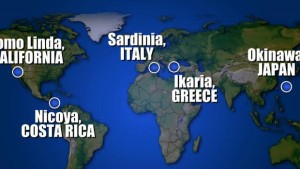 How to eat? Paleo or vegan? Mediterranean or Okinawan? Raw? Juiced? Gluten free? Low glycemic? High fiber? Low fat? Intermittent fasting? Is there a “right” way? Is there a clear path to robust health through nutrition?
How to eat? Paleo or vegan? Mediterranean or Okinawan? Raw? Juiced? Gluten free? Low glycemic? High fiber? Low fat? Intermittent fasting? Is there a “right” way? Is there a clear path to robust health through nutrition?
Yes and no. As the China Study I wrote about last week makes so clear that even fourth-generation cattle ranchers might hoist themselves out of their saddles to take notice, animal protein – especially in the astounding amounts Americans consume – is a fast track to chronic illness and accelerated aging .
If you look at the eating habits of the healthiest, longest-lived people on earth, the active, vibrant inhabitants of the so-called Blue Zones, you’ll see, generally, a plant-based diet. But you’ll also see variations that reflect differences in geography, climate and culture. And you’ll seem, yep, some animal protein.
The Blue Zone Sardinians love their pecorino cheese and drink a considerable amount of read wine. On the other side of the world, the Blue Zone Okinawans consume no diary, love fish and sip tea all day. The Greeks (on Ikaria, dubbed “the island where people forget to die” – and not because they suffer from dementia…which they don’t) drink goats’ milk, love their olive oil and make liberal use of wild herbs.. In the only “zone” in N. America, The Seventh Day Adventists are vegetarian teetotalers who eat beans and nuts. The diet of the Nicoyan Costa Ricans is perhaps the simplest: corn and beans. So, no, there is not one true path. There is eating real, whole foods, eating local, and taking joy in that.
That is a big “and.” We hard-charging, must-find-the-one-true-path North Americans might experiment by adopting one way of eating or another – fads come and go, best-selling diet and nutrition books come and go — but we hardly ever joyously adopt.
It may be this lack of joy, actually, that is holding us back. I don’t mean just holding us back in eating consciously, healthily and happily but in living vibrant, active lives.
The Blue Zone folks? Sure, they eat simple, healthy foods. But they also often have a direct relationship with the food they eat, and they celebrate it with family. They create unpretentious rituals around eating. And so food is a pleasure – not, as it is for many of us, a long list of do’s and don’t, of can-haves and must-haves.
It’s not just food that brings them pleasure (and helps extend their healthy lives). They experience the joy of having a life-long strong sense of purpose. Yes, life-long. They feel needed. They are needed. They feel (and are) useful. Long long past “retirement” age, they actively contribute to the daily lives of their families and their communities. This, just as much, perhaps more, than any particular diet is their “secret” to the extraordinarily active, extraordinarily long, virtually disease-free lives.
April 13, 2016 No Comments
What’s the beef?
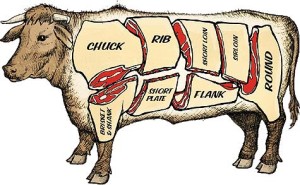 Once upon a time, Cornell University, University of Oxford and the Chinese government jointly funded a study so meticulous, so exactingly engineered, so scrupulously conducted, that the New York Times called it “the Grand Prix of epidemiology.” The study, which ran for 20 years, investigated the relationship between the consumption of animal products (including dairy) and chronic illnesses such as heart disease, diabetes, breast cancer, prostate cancer and bowel cancer. Can you guess the results?
Once upon a time, Cornell University, University of Oxford and the Chinese government jointly funded a study so meticulous, so exactingly engineered, so scrupulously conducted, that the New York Times called it “the Grand Prix of epidemiology.” The study, which ran for 20 years, investigated the relationship between the consumption of animal products (including dairy) and chronic illnesses such as heart disease, diabetes, breast cancer, prostate cancer and bowel cancer. Can you guess the results?
If you guessed (of course you did) that over-consumption of animal products — in the absence of any other mitigating factors – was linked to a host of chronic illnesses, you are right. Old news, right?
Not so fast.
Did you guess that the results of the study also strongly suggested that people who avoid all animal products, including beef, pork, poultry, fish, eggs, cheese and milk escape, reduce or reverse the development of all the aforementioned diseases?
Hundreds of clinical studies during the past several decades show that consumption of meat and dairy products, especially at the high levels seen in the U.S., cause/ contribute to cancer, diabetes, heart disease, and other illnesses. The so-called China study dramatically illustrates the other side of the coin: That avoidance of animal products, or consumption of very modest amounts of animal protein (less than 10 percent of total calories) is directly linked to absence of these diseases.
Did you know that the USDA continues to advise us to get 25-35 percent of calories from protein, a recommendation that flies in the face of the China Study evidence?
Did you know that Americans eat more animal products per person than anyone else on earth and have twice the obesity rate, twice the diabetes rate and nearly three times the cancer rate as people in the rest of the world?
Did you know that the multi-billion dollar U.S. meat industry (beef alone is a $95 billion a year industry) contributed close to $11 million to political campaigns (2014 data) and spent close to another $7 million on lobbying efforts? The agricultural industry’s history of influence over dietary guidelines and the food pyramid (or plate) is well-documented.
Beef. It’s what’s for dinner.
Milk. It does a body good.
Imagine for a moment that Big Pharma came up with a pill (a very expensive pill, of course) proven to drastically reduce the occurrence of heart disease. Heart disease is the #1 cause of death in the U.S. One out of every three deaths is attributable to heart disease. Currently about 28 million Americans have been diagnosed with heart disease. And now, imagine that there’s something close to a cure! Oh the headlines! The Dr. Oz specials! The billions spent on advertising!
There is no pill. But there is something very close to a cure. It’s called a plant-based diet. The evidence is as close to incontrovertible as dietary evidence can be.
Where are the headlines?
April 6, 2016 No Comments


